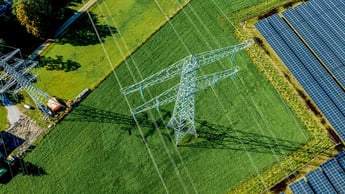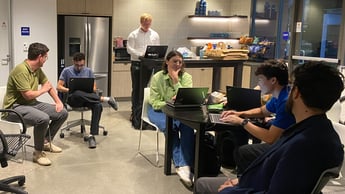Generative AI on top of AWS-hosted Earth Observation data, helps urban planners plan for liveable cities
Challenge
More and more companies are relying on (analyzed) earth observation data in risk management or decision making. But leveraging the power geospatial data is labor-intensive and requires skilled engineers.
One of our earth observation partners, NEO, has collected and analyzed terabytes of geospatial data, satellite imagery and aerial photography. NEO’s Geo-AI DataFactory, named “SignalEyes”, processes and analyzes this data. NEO sells the higher-level information and actionable insights to their customers. Municipalities, for example, use this information to improve a city’s quality of life based on the trees, their number, distribution, and housing vicinity to green spaces.
NEO has the ambition to bring their data and information services closer to the decision makers. Before, for each analysis request from a customer they built custom data-pipelines and analyses. This works for small-scale operations but requires skilled technical people and lots of time – not a scalable business approach. That’s why NEO asked us to take their product to the next level, making it more scalable and reusable.
Solution
To make analyses on earth observation data scalable and reusable, we have built a dynamic self-service solution: the NEO SignalEyes API. The SignalEyes API is an application with an intuitive, GenAI-driven user interface, where users can select (NEO’s) geodata sources, zoom in on specific areas of interest, and perform an analysis based on a preconfigured library of concepts. We have built a back-end, using FastAPI, AWS Cognito, the Open Street Map service, and connected it to several geospatial databases containing images and metadata on buildings, trees, green spaces, and solar panels.
For example, users can select trees and buildings from NEO as sources, and choose the concept ‘count’. This concept then calculates the number of trees in a radius around buildings. The user can set specific settings (e.g. the diameter of the radius) and filters (e.g. trees higher than 10 meters) dynamically.
The complexity of this application lays in the dynamic and generic set-up, designed for growth. Over time, the amount of data sources will increase and new preconfigured concepts for analysis will be added. The SignalEyes API allows for dynamic combinations of existing and future sources and concepts.
To enable for reusability of the complex custom analysis results that were previously built by NEO engineers, we’ve introduced ‘SignalEyes API Analyses’. These are pre-configured analyses, that users can select and apply to their area of interest (e.g. city or neighborhood). An example of such an analysis is the ‘3-30-300 rule’. This rule is used for sustainable urban planning. It checks whether there are at least three trees within a certain distance from a home, the neighborhood has at least a 30% tree canopy cover, and the nearest high-quality public green space is within 300 meters. Municipalities use this analysis to create greener and more livable cities and neighborhoods.
In addition to the classical front-end application, there are two more ways to interact with the SignalEyes API. Developers can connect directly to the back-end (via API) to perform more complex analyses, and users with less earth observation expertise can use a GenAI (chat) interface. This interface allows them to analyze geospatial data by interacting in natural language. No more need for assistance of a highly technical domain expert, anyone can turn data into value. Check the video below for how it works in practice.
Impact
The application is brand new, and we are in the early phase of proving the value in practice. However, we hear that users from different types of organizations expect to analyze geospatial data faster, cheaper, and more dynamic. The intuitive setup of the application, and the GenAI interface enables users with less technical knowledge to perform any analysis they have in mind, without the help of an expert.
Furthermore, technical domain experts at NEO can now focus on adding new data sources or extending the library of preconfigured analyses, instead of executing custom user requests in a manual fashion. Altogether, an easier, more scalable, and more reusable way of working.







